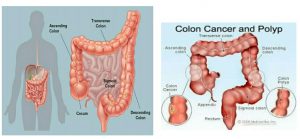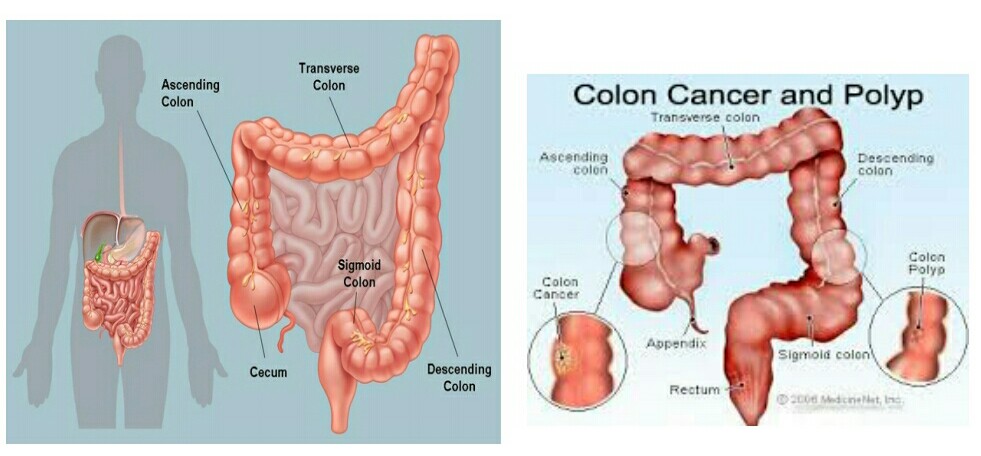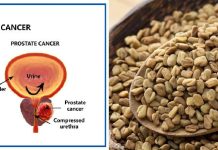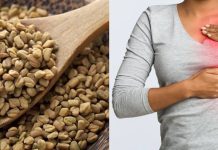An article on the epidemiology, risk factors, causes, symptoms, signs, diagnosis, tests, treatment, prognosis and prevention of colon cancer (colorectal or large intestine cancer)
Colorectal cancer (CRC) is the malignancy of the colon and rectum;that is, cancer of the large intestines or bowel.
It is a universally deadly cancer with about half a million mortality worldwide each year.
Colon cancer is the commonest cancer of the Gastrointestinal tract, followed by stomach cancer.
Globally it is a disease of the elderly or aging and the western world but has gradually become a significant worldwide health concern over the past 45 years.
Epidemiology
About 1 million new cases of colorectal cancer are diagnosed worldwide annually with developing countries currently contributing over 30% of the cases.
Colorectal cancer accounts for about 11% of cancer cases in both sexes;and a mortality of about 1/10th among those with the disease.
Previously colon cancer used to be rare in Africa,however current cancer data, show an incidence rate that triples former reports in the same centre.
In fact, CRC is one of the top 5 cancers in
Nigeria at present with a high mortality even
among the young age populations.
Risk factors/Causes of Colon Cancer
There are no known actual/definitive causes of colorectal cancer but possible multifactorial associations have been found to increase person’s chances/risks of developing it. This include:
➡️ Diet: Increase red meat and saturated fat, low fibre diet makes one prone to cancer of the colon.
➡️Lifestyle: Alcoholism and cigarette smoking doubles once risk of colorectal cancer.
➡️ Genetic/Hereditary: Some form of cancers run in families and colorectal cancer is one of them. Presence of certain genetic conditions like Familial Adenomatous Polyposis (FAP) and Hereditary Nonpolyposis Colonic Cancer (HNCC) in the family/relatives triples the likelihood of colon and rectal cancer
➡️Post-cholecystectomy (surgical removal of the Gall bladder) and ileal/intestinal resection: increased bile salts exposure to the colon predispose to cancer. The bile salts subtly but surely injures the large intestine and predisposes it to malignant change and cancer.
➡️Ureterosigmoidostomy (surgical connection between urinary tract to the bowel): For whatever reason, persons whose urinary tract is connected to the colon have of increased risk of developing colon cancer epidermiological studies have shown. This is probably due to the erosive nature of urine to the large intestine.
➡️ Exposure of the bowels to ionizing radiation
➡️Presence of Precancerous conditions: ulcerative colitis, Crohn’s disease.
Protective factors against colorectal cancer
There are certain factors that protect against and minimises the chances of developing cancer of the colon and rectum. They are:
➡️Increase fibre diet: vegetables, fruits and cereals/wheat reduce colon exposure to bile acids by aiding motility within the bowel and as well making the contents bulky.
➡️Reduce fat, energy drinks and red meat consumption: daily eating of fresh fish and natural food, not fast foods, have been found to be protective against large intestine cancer. For Africans please avoid western dietary preferences which are low in bulk and fibre.
➡️Lifestyle modification: stoppage of both alcohol consumption and cigarette smoking.
Classification of Colon Cancer
(A) In terms of cancer origin:Primary Arising from the colon itself (commoner).
Secondary/Metastatic Originating from other site(s) or organs and not from the bowel (very rare)
(B) In terms of occurrence: Sporadic is epidemiologically commoner than Familial or Genetic – for example, FAP, HNCC .etc.
(C) In terms of histological cell type (microscopic view): Adenocarcinoma (about 90% of cases, WHO)
Others – colloid, anaplastic, squamous cell
(D) Macroscopic/Pathology: Annular, Tubular, Ulcerative,and Proliferative
(E) Surgical staging and Prognosis (possible outcome.
Symptoms and Signs of Colon Cancer
Usually no specific symptoms of colon cancer but when present can be the following:
➡️Change in bowel habit (constipation alternating with diarrhoea)
➡️Passage of blood and mucous in stool or frank anal bleeding
➡️Pain on passing stools
➡️Nausea and vomiting
➡️Abdominal swelling or pain
➡️passage of pellet-like stools
➡️tenesmus – even with empty bowel, the person feel a persistent urge to stool
➡️Weakness/easy fatigability
➡️ Anemia/shortage of blood
➡️Weight loss and loss of appetite
➡️‘Haemorrhoids’ or piles
➡️Cough/difficulty in breathing or chest pain
➡️Yellowness of the eyes
➡️Bone pain
➡️Urinary complaints
➡️Confusion from possible spread to the brain

CREDIT: medicinenet
Management of Colorectal Cancer
The treatment option depends on the following:
➡️History (Age, Lifestyle, Family history etc.)
➡️Time of presentation (the earlier, the better the outcome)
➡️Physical examination and investigation findings
➡️The histological grading and surgical staging (Duke’s classification)
➡️The prognosis(possible outcome and life expectancy)
➡️The presence or absence of complications and comorbidities.
Possible Investigations (Tests)
The following are likely investigations to aid
management and prognosis:
√Baseline Full Blood Count, ECG, Urinalysis
√Electrolytes/Urea/Creatinine (kidney function test), Liver Function Test
√Abdominopelvic UltraSound Scan/CT Scan/MRI
√Sigmoidoscopy and Colonoscopy
√Barium enema
√Rectal Endosonography
√Plain X-Ray (Chest and Abdominal Xrays)
√Tumour marker: Serum Carcinoembryonic antigen (CEA)
√Biopsy for histological confirmation/diagnosis
Treatment options for colon cancer
➡️Surgery remains the definitive treatment for colon cancer – affected parts are surgically removed accordingly.
➡️But for rectal cancer, surgery is the
mainstay option with additional
chemotherapy and radiation therapy
Prevention and Prognosis
In the presence of positive family history of colorectal cancer, Familial Adenomatous Polyposis (FAP) and Hereditary Nonpolyposis Colonic Cancer (HNCC) there should be:
👉Routine tumour marker assay-Serum CEA
👉Faecal occult blood testing
👉Routine and regular colonoscopy
👉Colorectal cancer is a preventable globally
notorious malignancy with worse outcome
among the young age group, however early detection and followup remains highly
invaluable in its management.
PS: Colon cancer and colorectal cancer were deliberately used interchangeably for simplicity and ease of understanding. They mean the same thing in this article but medically, they are viewed differently by some authors.
References:
1. Surveillance, Epidemiology, and End Results Program. SEER Stat Fact Sheets: Colorectal Cancer. National Cancer Institute. Available at http://seer.cancer.gov/statfacts/html/
colorect.html.
2. Irabor DO. Diet, environmental factors and increasing incidence of colorectal cancer in Nigeria. Ann Nigerian Med 2014;8:5864
3. Eze GI, Igbe AP, Obaseki DE, Akhiwu WO, Aligbe JU, Akang EEU et al. Presentation of colorectal cancers in Benin city,Nigeria. Sahel Med J 2010;13:248.
4. Aune D, Chan DS, Lau R, et al. Dietary fibre, whole grains, and risk of colorectal cancer: systematic review and dose response meta-analysis of prospective studies. BMJ. 2011 Nov 10. 343:d6617.
5. World Health Organization, International Agency for Research on Cancer. Colorectal Cancer: Estimated Cancer Incidence, Mortality and Prevalence Worldwide in 2012. International Agency for Research on Cancer. Available at http://gco.iarc.fr/today/data/factsheets/cancers/10_8_9 Colorectum-fact-sheet.pdf.
Written by Chuckwuemeka James (MBBS,BENIN)
























